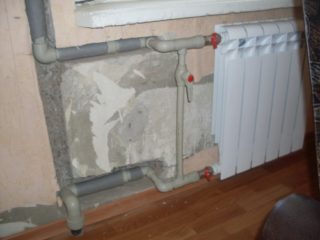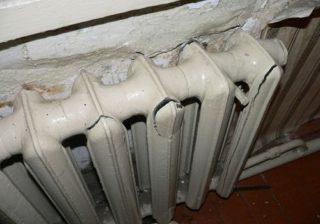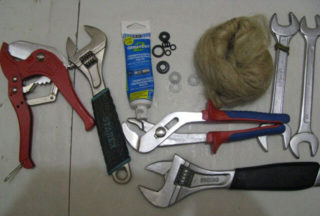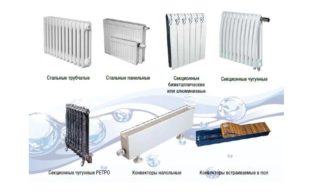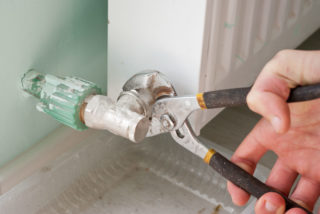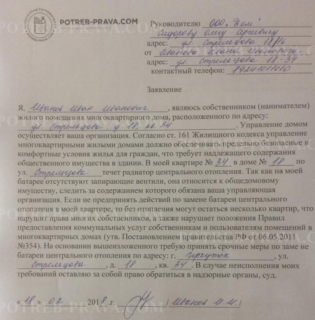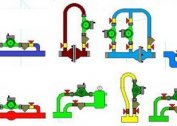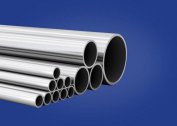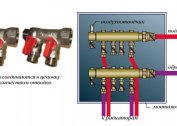Many city residents are familiar with the situation when, after the start of the heating season, the long-awaited heat in the house is not observed. At the same time, the neighbors say that they have heat. The blame for this situation is not Energosbyt, but people who have made mistakes when installing or replacing heating radiators in the apartment. The situation is not simple, unpleasant, but completely solvable. In most cases, to stop freezing, you need to change the batteries or the central riser passing through the floors. In this case, it is necessary to take into account a number of nuances related to the technical and legal side of this issue.
Who should change the batteries in the apartment
Replacing heating batteries in an apartment in a multi-storey building is an event that requires careful preparation. In accordance with applicable law, one of its stages is the clarification of information regarding ownership of the heating circuit. In most cases, the system, if a private autonomous boiler is not installed, is a public property with which it is forbidden to perform any independent actions, with the exception of air bleeding.
If in doubt, write a statement to the management company and wait for the conclusion of the examination. It is carried out by studying the construction and technical documentation and inspection of communications.
Based on the survey, conclusions are drawn of this orientation:
- A method of servicing premises in an apartment and their relation to the general network
- The presence or absence of a separate riser, which is designed to heat only one property.
If the housing is supplied independently, the owner has the right to carry out the replacement of heating independently. When it comes to the part of general communication, repair and installation of radiators can only be carried out by a master who has the right of access to shutoff and control valves.
Why you might need a replacement
In most cases, the lack of heat during the heating period is associated with malfunctions of communications and heating elements. To get this confirmation, you need to go to the neighbors or go down to the basement. The hand will immediately feel the difference in temperature.
Reasons for replacing heating batteries:
- Clogged canals with dirt and construction debris. Foreign bodies appear in the pipes after the repair is carried out on the heating main in an open way.
- Calcium deposits. This phenomenon is characteristic of buildings and communications, whose age is several tens of years. The narrowed channels slow down the coolant and it cools quickly.
- The need to change the design of the room, which does not fit the old heating equipment - untidy cast-iron products, covered with several layers of peeling paint.
- The appeared leak. This is a dangerous phenomenon, indicating corrosion and wear of the metal or the beginning of the destruction of the gaskets. Immediate replacement of heating radiators is required, as the hole can expand rapidly and massive flooding of neighbors will occur.
- In order to prevent. Change the heating elements regularly in accordance with the instructions of the manufacturers.
To replace radiators, it is recommended that you contact professional contractors.You can only install batteries yourself if you have the necessary skills and equipment to carry out this procedure.
Tools and materials required for replacement
To replace obsolete heating equipment, you must have at your disposal a set of tools and accessories that will be required to remove, repair and install heaters.
To work, you will need:
- gas key;
- welding machine;
- plumbing pliers;
- hammer;
- core;
- hammer drill;
- a grinder with a cutting disc for metal;
- taps and dies for threading;
- soldering iron for welding polypropylene pipes;
- scissors for cutting sections from PPR;
- roulette;
- level;
- marker;
- construction gloves;
- protective glasses;
- respirator.
To install new heating equipment, you need to purchase:
- radiators approved by the management company;
- brackets for hanging batteries;
- Ball Valves;
- Mayevsky taps to remove air jams;
- stubs;
- tow or FUM tape;
- pipes meeting the technical specifications;
- set of fittings for wiring.
Since the change of heaters is accompanied by a spill of water, stock up with rags for emergency collection. This will prevent unpleasant situations with damage to the flooring or flooding of neighbors.
Self removal of radiators
Before removing old equipment, you should consider the advisability of replacing the internal wiring. Pipes can be clogged with limescale and dirt, especially at junctions and turns. Instead, it is advisable to install modern polypropylene sections.
Removing the batteries is performed as follows.
- Unscrewing threaded connections at the radiator inlet. If the joint does not lend itself, it can be heated with a burner. If the product is to be disposed of, it is simply cut off from the pipe.
- The battery is carefully removed from the brackets. To facilitate further transportation, water must be drained from it. Throw away the dismantled element is not worth it, since it can be profitably delivered for scrap at the railway reception point.
- Pipes are cut at a distance of 15-20 cm from the riser. At the ends, a thread is made to which the transition fittings for plastic wiring are screwed.
- To improve the heat transfer of the heaters, a foamed penofol is attached to the opening where they will hang. Previously, the base is cleaned of debris and primed. This will ensure uniform distribution of the heated air flow throughout the room.
When carrying out metal cutting and welding, it is recommended to protect walls and floors with plywood or cardboard shields moistened with water. Sparks can damage the finish and cause a fire.
Install new batteries
Before starting to install new heating equipment, remove the removed products from the premises so that they do not interfere with work. Floors need to be covered with dense material so as not to scratch them with sharp edges of heaters.
Further work is carried out in the following sequence:
- Marking for mounting brackets. Distances are indicated in the instructions that accompany the products. The vertical and horizontal are verified using the level.
- Drilling holes. Plastic dowels are inserted into them and the holders are screwed in. Here you need to maintain the exact distance to the wall so that the heaters accurately and firmly become in the grooves.
- Mounting radiators on brackets. If the choice is made in favor of cast iron products, it is better to invite an assistant, as the batteries are very heavy.
- Making wiring. For this, metal welding or a soldering iron for polypropylene is used for this. Before entering the radiator, you must definitely put a ball valve.
- Production of drives, their connection to inlet and outlet openings. After that, the entire system is assembled and looped back.
- Installation of the Mayevsky crane. This is done on the upper floors where the riser ends. The replaceable part is screwed in place of the plug on the top of the battery opposite from the inset. A tap is needed to bleed air after feeding the system.
- Fastening of caps. They are placed in the unused ends of the radiators, making them airtight. To achieve greater reliability, it is worth wrapping a tow or FUM tape on the thread.
An initial test is recommended to be carried out before the water supply, in order to avoid an emergency. To do this, use a brush and soap solution. Swirling bubbles will indicate the presence of low-quality joints. Such nodes need to be redone and re-inspected.
What time to carry out work
It is allowed to replace fragments of the heating system during the spring-autumn period after the water has been drained from the pipeline. At this time, repair work will not cause others any trouble. After carrying out all the measures, the tightness of the circuit is checked using special equipment by injecting compressed air into the riser and monitoring the maintenance of constant pressure in it. This service is paid, but the damage from flooding neighbors can be hundreds of times more expensive.
Since the activities of utilities are scheduled months in advance, an application for the provision of special services must be submitted in advance. Otherwise, you will have to replace the heating appliances yourself, without permission, at your own peril and risk. It should be borne in mind that in the event of an emergency, you will have to pay repair to neighbors and a fine from the management company.
Is it possible to replace without disconnecting the riser
In accordance with current regulations, batteries may only be changed during the off-season. But no one can guarantee that an emergency will not occur during the heating season.
Options for action in such cases:
- There is a ball valve in front of the entrance. The water flow is blocked, after which you can safely unscrew the radiator from the supply and return. Then it is repaired or changed to a new product.
- Ball valves are missing. The riser overlaps, the water drains. Pipes are cut, stop valves are screwed to them. Water is supplied to the riser, the landlord in a calm environment replaces a faulty battery.
In all cases, their actions must be coordinated with representatives of the management company. Independently intervening in the operation of the common heating system is prohibited.
Procedure time
If you have the necessary equipment and experience in handling it, you can replace the heating devices quickly and efficiently.
Calculation for one product:
- preparation of the project - 10 minutes;
- cutting feed and return - 5 min;
- removal and removal of the old radiator - 5 min;
- installation of a heat shield - 15 min;
- mounting brackets - 10-15 minutes;
- assembly of the circuit with a ball valve - 40-60 min;
- fastening the Mayevsky crane - 5 min;
- connection of wiring - 10 min;
- assembly quality check - 10 min.
It will take no more than 2.5 hours to replace the battery in one room. For repairs in a standard kopeckhouse, 8 hours is enough, taking into account the lunch break.
